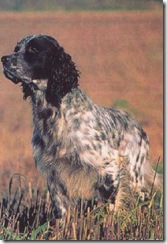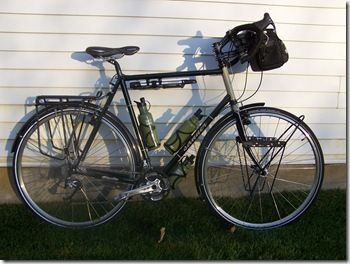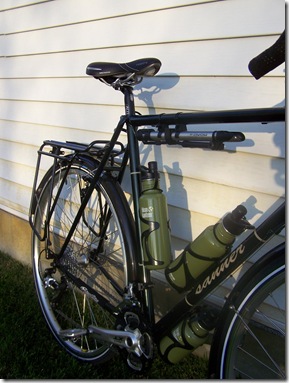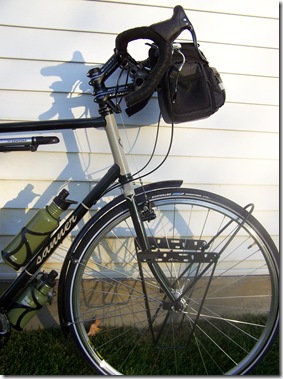It’s hunting season. All across the Midwest, sportsmen are out enjoying the crisp autumn air while pitting their knowledge and skill against deer, waterfowl, pheasants and various small game. I see the bird hunters walking the uplands in their blaze orange vests and feel a little nostalgia. I used to be among them. In the decades of the 70s and 80s, I used to canoe the small northern Illinois river near where I lived, jump shooting squirrels, ducks, and doves. I went on a couple goose hunts, but mostly I enjoyed walking miles of swales, fence lines, and harvested corn fields with my English Setter, Clyde, looking for Ring-necked Pheasants.
Clyde came to me in a round about way. We owned Appaloosa horses at that time. Prior to purchasing our own “hobby” farm in the country, we boarded them at a large horse farm, whose owners, the Pasinantis, raised and showed Arabians. Stan always had some kind of hobby going, and at that time, it was Arabian show horses. It seemed after a while, that he lost a little interest in his current hobby, and would switch to something new. In this case, he switched to hunting. He purchased an expensive English Setter field trial dog while in Kentucky. Then he purchased Bobwhite Quail to stock his farm, so that he could hunt.
One day, while tending our horses, he asked if I would take him pheasant hunting. He’d furnish the dog, Clyde. I was excited, as most of our “dogless” hunting consisted of stamping through the fields while trying to figure out how to cut off any running birds by sending a fellow hunter on a wide swing ahead. We knew there were a lot more birds we never saw, than the ones we actually kicked up.
We headed to a farm where I had hunting privileges near Leaf River, Illinois. Problems started right away. You see, English Setters, which are pointing dogs, and field trialers in particular, are runners that tend to range far afield. They cover a lot of territory, ranging well out from the hunter, working because the quail or partridge they are after, tend to hold tight while the dog points until the hunter arrives for a shot. Pheasants however, don’t play this game. Likely as not they will run, or don’t hold tight when pointed, often jumping into flight long before the hunter gets in range. And, Clyde loved to run and cover huge amounts of land. He jumped pheasants, but too far away to shoot. Stan could not make Clyde stay close. Clyde basically hunted for himself.
There was also another problem. Illinois hunting primarily occurs on private land. You have to get permission to hunt from the landowner. While one owner may know and trust you, the farmer next door may not feel the same. So the hunter is restricted to the property on which he has permission to hunt. Clyde observed no such restrictions. If he got on the trail of a pheasant, he went were it led him. So it was, that Clyde went under the fence and into the standing cornfield of the adjacent farm. Stan called and whistled, but could not get Clyde to return. We could hear the whistle and cackle of pheasants, but could not see them or Clyde. Stan was embarrassed and angry. His $500 (a lot for a dog in 1979) bird dog was running wild.
I told Stan that I could get Clyde back. He just laughed. He owned, fed and cared for Clyde. No relative stranger to the dog, would have any more success than he. So, I pressed the safety button on my Weatherby Centurion 12 Gauge, and fired a shot into the air. About 5 seconds later, Clyde was at my side.
Clyde knew that a gun going off, usually meant a downed bird. So, he was right there, wondering where that bird was. The rest of the day, he stayed close to me, hoping he’d hear the gun again. He quite hunting for himself, and hunted for me.
The remainder of the season, Stan always asked me to come along on his hunts, as I controlled the dog. In the spring, Stan’s interest turned again from hunting dogs to Bass fishing. He sold a couple of horses and purchased a Ranger bass boat. He also presented me with a deal. He’d give Clyde to me, if I’d promise to take him with us on hunts the next fall.
Deal! Stan never did hunt with us again, as he quickly tired of bass fishing, hunting, and horses, and got into sled dog racing. He has since sold the horse farm and moved to Ely, Minnesota, where he is a canoe outfitter in the summer and races in the winter. He has even raced in the Alaskan Iditarod. Clyde and I hunted every fall.
Once, my father went with us to a wildlife area in north central Illinois. Clyde pointed birds, and we obtained our limit. We had a long walk back to the car, and on the way, we topped a hill to observe 4 hunters with 2 dogs hunting in a swale below us. We watched them get to the end of the swale without finding any birds. The black Labs they had were criss-crossing the cover, but found nothing. Clyde took off in a sprint. He ran through the swale, pointed two birds, which the hunters shot, and then returned to my side. The hunters waved and yelled thanks, and we continued on. While we had finished our hunt, apparently Clyde had not.
As time went on, it became more difficult to find land on which to hunt. Clyde and I resorted to hunting along abandoned railroad tracks. Farming practices in Illinois were no longer really conducive to good Pheasant habitat. They became few and far between. Clyde did not care. He just wanted to run and hunt. A number of times, when I was at the point of exhaustion from hiking through the brush and briars along the tracks, and headed back to the car, Clyde would go on point. As I approached to kick up the bird, I’d notice Clyde was not staring straight ahead, but was looking back out of the corner of his eye to see what I was doing. There was never a bird. I think he went on point to get my mood back to the hunt, hoping we’d keep going.
Clyde was the true “one man” dog. All he desired was to hunt and be at my side. To him, I think no other human or dog existed. When he died on a cold fall day in 1986, I buried him in the horse paddock behind the barn. I never hunted again.












































